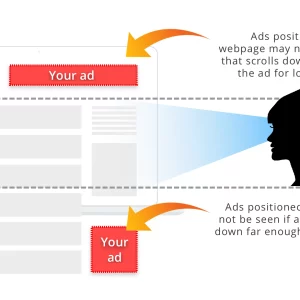
In the ever-evolving landscape of SEO, one factor remains constant: content is king. But how we present that content matters just as much as the content itself. Enter semantic HTML, the language that breathes life into your web pages, not just for search engines, but for your users as well. Forget keyword stuffing and forced formatting; semantic HTML is about clarity, structure, and meaning, and it’s the key to unlocking your website’s full SEO potential.
Beyond Basic Tags: Understanding the Semantic Advantage
Traditional HTML focused on visual presentation, dividing content into generic blocks like <div> and <span>. Semantic HTML, however, takes a different approach. It replaces these generic tags with elements that explicitly describe the content they contain. Imagine replacing <div class="intro"> with <section class="introduction">. The subtle shift tells search engines and users precisely what they’re looking at: an introduction. This clarity has multiple benefits:
1. Improved Content Understanding:
- Search engines can more accurately grasp the context and hierarchy of your information.
- Heading tags like
<h1>and<h2>denote importance, while<nav>and<main>identify key sections. - This helps search engines crawl your website effectively and index relevant content.
2. Enhanced User Experience:
- Semantic HTML translates into a more logical and intuitive website structure.
- Screen readers interpret elements like
<article>and<aside>correctly, improving accessibility for visually impaired users. - Users can easily navigate through different content types, boosting engagement and satisfaction.
3. Voice Search Optimization:
- As voice search continues to rise, semantic HTML becomes even more crucial.
- Clearly defined elements guide virtual assistants like Siri and Alexa to understand your content, increasing the chances of your website appearing in voice search results.
Unveiling the SEO Secrets of Semantic HTML:
Now that we understand the advantages, let’s delve into the specific elements that power semantic SEO:
1. Headings (<h1>, <h2>, etc.): These aren’t just for formatting; they establish a clear hierarchy for your content, guiding search engines through your page’s structure. Use them logically, with the main heading as <h1> and subheadings as <h2>, <h3>, and so on.
2. Sections (section, article, aside): Divide your content into meaningful sections like <section class="product-description"> or <article class="blog-post">. This helps search engines understand the different parts of your page and rank them accordingly.
3. Navigation (nav): Clearly identify your website’s navigation bar with the <nav> element. This not only improves accessibility but also helps search engines understand how users move through your site.
4. Content Elements (figure, img, hcard): Wrap images with <figure> and captions with <figcaption>. Use <img> with descriptive alt text for accessibility and SEO. For contact information, utilize <hcard> to structure data for better search result understanding.
5. Rich Snippets and Schema Markup: Enhance your search result presentation with schema markup, a structured vocabulary that further clarifies your content’s meaning for search engines. This can lead to rich snippets like star ratings or event details appearing in search results, boosting click-through rates.
Semantic HTML Beyond On-Page SEO:
The benefits of semantic HTML extend beyond on-page optimization. Its structured nature makes your website crawlable and mobile-friendly, crucial factors for Google’s mobile-first indexing. Additionally, semantic HTML can integrate seamlessly with JavaScript frameworks like React and Angular, making it a future-proof choice for web development.
Challenges and Solutions:
Implementing semantic HTML may present some challenges. Existing websites might require code restructuring, and content creators need to familiarize themselves with new element types. However, the long-term SEO and user experience gains far outweigh the initial investment. Several tools and resources are available to help, including HTML validators, online tutorials, and developer frameworks with built-in semantic support.
The Future of SEO is Semantic:
In the years to come, semantic HTML will become increasingly important for SEO success. Search engines are continuously evolving to prioritize user experience and understand content meaning. Semantic HTML provides the perfect bridge between your website and search engines, ensuring your content is not just seen, but truly understood.
Embrace the power of clarity. Embrace semantic HTML. It’s time to let your website speak for itself, and semantic HTML will ensure the world is listening.






